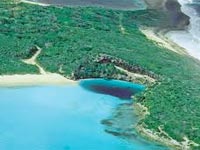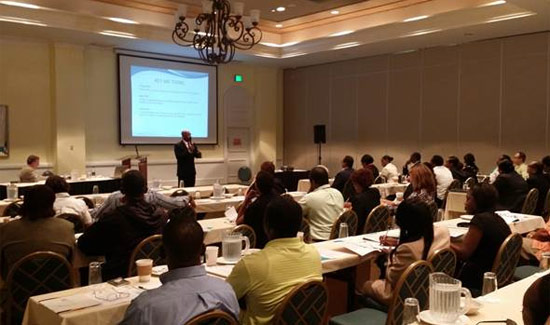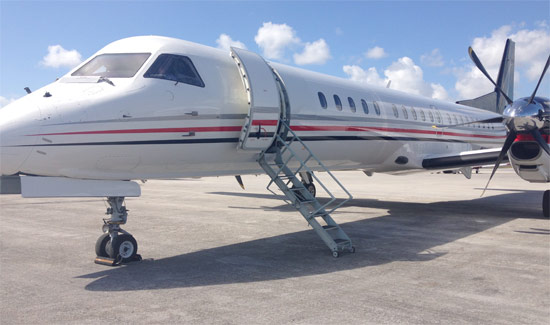
An online article claiming that most Bahamians make their living “farming or selling trinkets at the local straw markets” while poorer Bahamians raid abandoned buildings for scrap material to construct makeshift huts, has sparked the outrage of Bahamians across the country.
The article titled, “What Types of Houses Do People Live in The Bahamas” which was posted on Travels.com, claims that the “islands’ ample working-class section often inhabits shacks and huts”.
“Even though The Bahamas has the third-highest income, per capita, in the Western Hemisphere, there is great disparity between the island’s haves and have-nots,” the article said. “Many Bahamians make their living farming or selling trinkets at the local straw markets. The country’s fierce hurricane season can damage these efforts, however, leading to further poverty.
“For the lower and lower-middle classes, small beach shacks and huts are home. They still maintain their colorful facades, though their insides are typically much more modest in nature. The poorest Bahamians typically create makeshift homes out of straw or wood. These materials are abundant in The Bahamas, both at industrial and retail outlets and along the beach, where straw and wooden debris can usually be found.
“Some of the poverty-ridden also raid abandoned structures, stripping them of their wooden planks and other viable materials. Unfortunately, even though these materials are in large supply, they do not hold up well. Termites, flooding and strong winds can easily destroy these huts. These huts can pop up almost anywhere, from a secluded beach to a hidden alley to an open space of land. These structures are poorly executed, since they are usually built by the shack’s occupants with no professional help,” the article continued.
The article, written by freelance writer Nellie Day, also described how the middle class lives.
According to the article, the middle class and upper-lower class “typically create their homes from brick or concrete, which can withstand hurricanes much better than wood or straw can. These materials can be expensive, and brick is usually cheaper and found in more abundance than concrete.”
Meanwhile, the upper-middle and upper class population of The Bahamas is said to live in ample living quarters.
“Some construct large, multilevel mansions complete with outdoor swimming pools, columns and a private entrance, while others live in sprawling manors that contain massive fruit trees, balconies, guest homes and docks.”
These homes, according to the article, are usually made out of concrete, to protect them during hurricanes.
But the article didn’t go over well with Bahamians, who used social media websites such as Facebook and Twitter to voice their displeasure. Hundreds of posts objecting to the article were posted to the writer’s Twitter page.
Bahamian professor at the University of Alberta Dr. Malinda Smith wrote in a Facebook post: “What an astonishingly ill-informed and factually challenged story. It is a fantasy that speaks poorly about the writer’s investigative skills, which clearly are non-existent. So 700 islands and 2,000 cays are reduced to this simplistic narrative dug up from the 1950s.”
Smith added: “I suspect [Day] never travelled to The Bahamas and probably saw pictures of cutesy, colorful cottages such as on Rum Cay or at the fish fry and assumed these were homes. Research via the Organization for Economic Co-operation and Development, the World Bank, or the Organization of American States would tell her the education, income, etc. of The Bahamas are ‘First World’, the same as the U.S., Canada, etc. And, moreover, The Bahamas has among the best building codes in the world, so we tend to have less hurricane damage than Florida, Mexico, Cuba, Jamaica, etc. But she is not dealing in facts, she is dealing in dangerous stereotypes and fantasy.”
Bahamian student Kenya Rolle said of the writer: “She is not talking about our Bahamas but one that is in the fairy books in a far, far and distant land.”
Another Bahamian wrote: “I think she went to an Arawak/Mayan museum and said it was The Bahamas. Garbage.”
When confronted by one Bahamian, Day explained via Twitter that she wrote the story based on what she saw and was told from “people who are supposed to know”.
She insisted that she loves The Bahamas and Bahamians and apologized to those who didn’t like the story. When The Guardian contacted Travels.com, a spokesperson said the article would be removed. “We apologize for all of the trouble the article caused,” the spokesperson said. Up to last night, Bahamians were expressing outrage over the article.
Krystel Rolle
The Nassau Guardian



